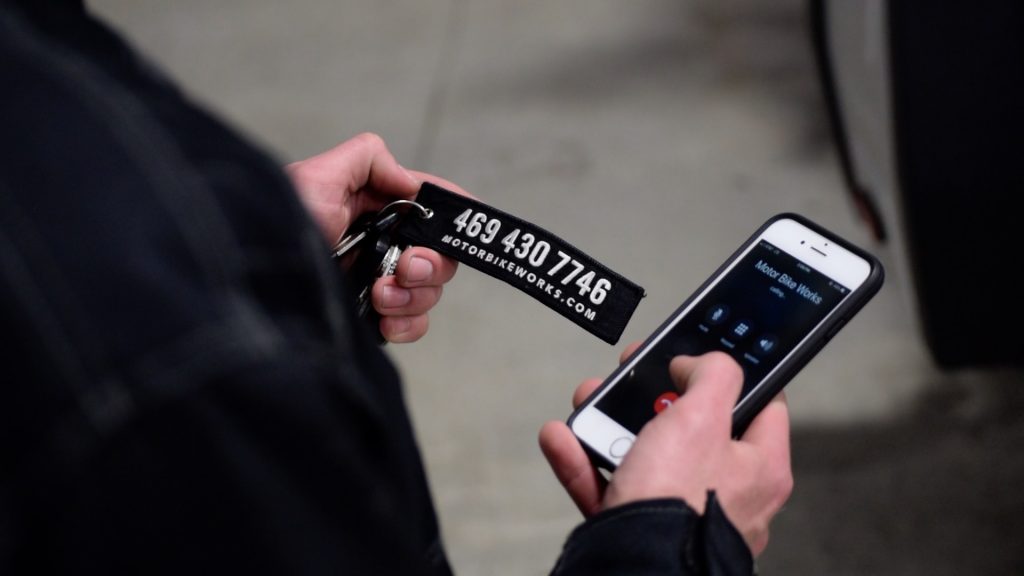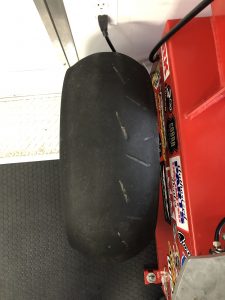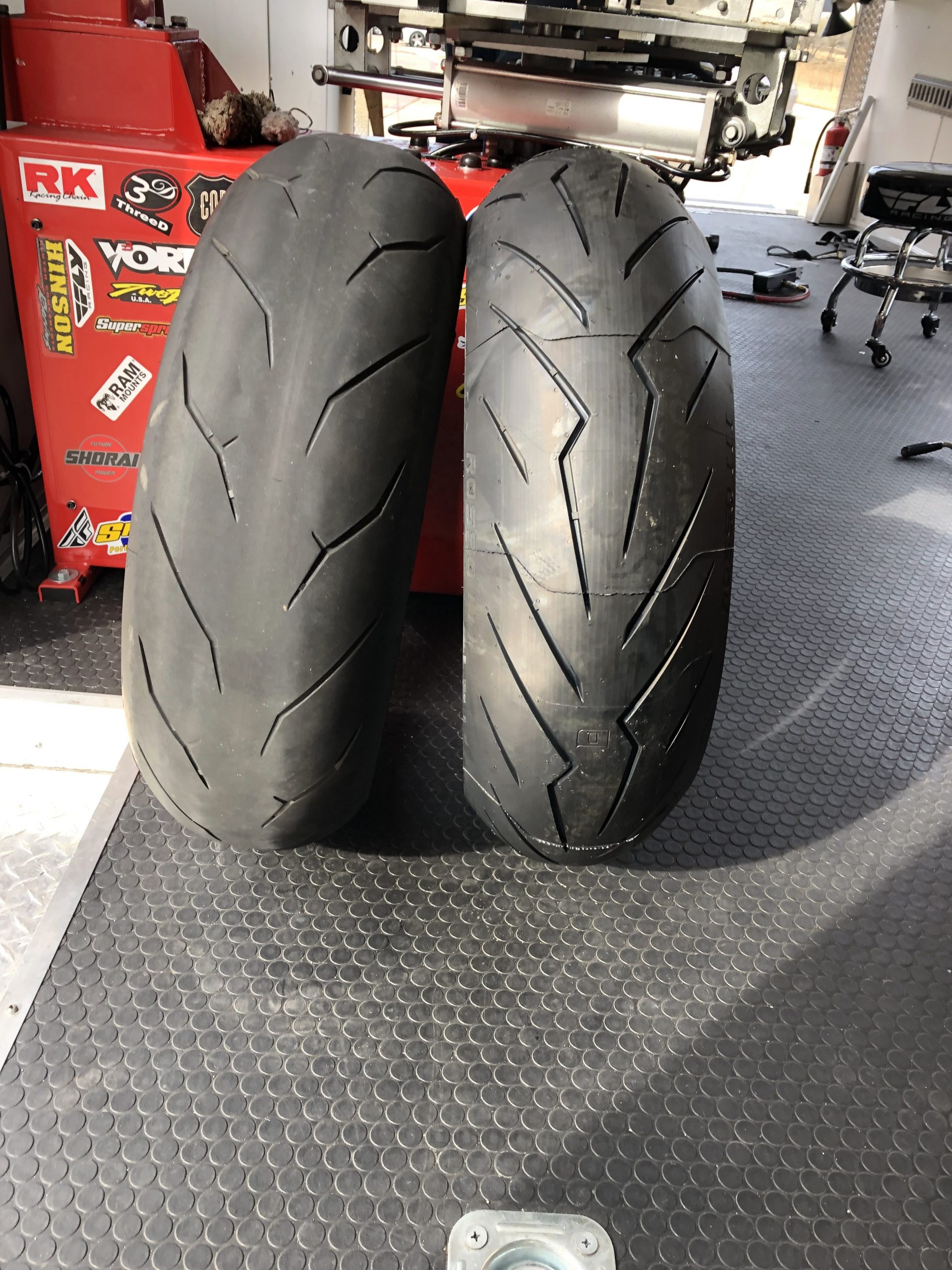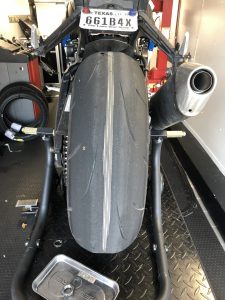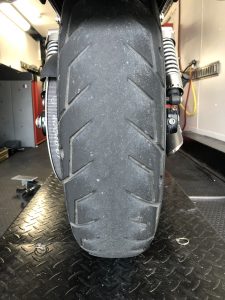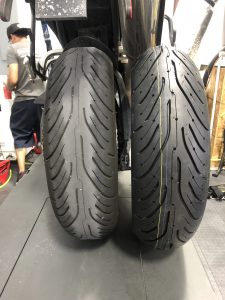Don’t let your motorcycle tires get TIRED out.
When it comes to motorcycle tire PSI and general tire safety, your life depends on it.
Dirt bikes, sport bikes, and cruisers all have one thing in common… two wheels. Your motorcycle has 50% less rubber insulating you from hitting the pavement at any point in time, when compared to our 4-wheeled road companions.
Your tires can last a long time depending on several factors:
- Type of tires you purchase
- Riding style
- Tire pressure
- Road conditions
Unfortunately, there are significant safety risks and simple mistakes that can occur due to under-inflated motorcycle tires or incorrect PSI readings!
How much PSI should my motorcycle tires have anyway?
One common mistake is that tires should be run at the pressure that you see printed on the sidewall. This is a great starting point, but to find the correct motorcycle specific tire pressure you will need to reference your owners manual.
The “Max PSI” numbers stamped on your tire references the load index of the tire and what it is built to handle. The reality is, your bike could be a light CBR or a heavy Hayabusa, and you will need to adjust your PSI accordingly.
Tires naturally lose air over time
Since tires are the only thing between you and the pavement, it’s important to keep an eye on the PSI levels regularly.
If you are a daily rider, strive to check your tire pressure weekly, and top off as necessary. If you aren’t riding quite as regularly, check it before every ride.


Example:
If you haven’t checked your tire pressure in 6 months, you have lost 6 PSI.
If the average air temperature has gone from 100 to 40, you have lost 6 PSI. That’s a total loss of 12 PSI in tire pressure!
For most motorcycle tires that is a 30% loss in total tire pressure!
Under-inflated tires can cause a list of safety risks:
- Decreased handling and riding precision
- Poor fuel economy
- Poor braking performance
- Excess heat
- Uneven tire wear
Overinflation is more uncomfortable than hazardous and your tire will end up wearing quickly and consistently where there is continual harsh tire-to-pavement contact.
Check your tires frequently with a good quality gauge. Keep in mind that gauges at gas stations are rarely calibrated, and just being off by a few PSI can alter your ride comfortability and safety.
Heat from the road can increase tire pressure, so make sure you check your tire pressure when your bike is “cold” (meaning it hasn’t been ridden in at least 30 minutes.).
Why would I want to ride with low tire pressure?
Tire pressure directly effects the handling characteristics of your motorcycle, and for that reason, under-inflation is a common practice by stunt riders.

Depending on your bike weight, we see stunt riders and wheelie fans running with their motorcycle tire PSI anywhere from 15-25. Although we wouldn’t recommend this for daily riding or for long hauls, the slightly lower PSI allows for a more comfortable wheelie session.
When should I replace my motorcycle tires?
If you are standing in your garage staring at a flat tire, it’s probably time to give us a call… 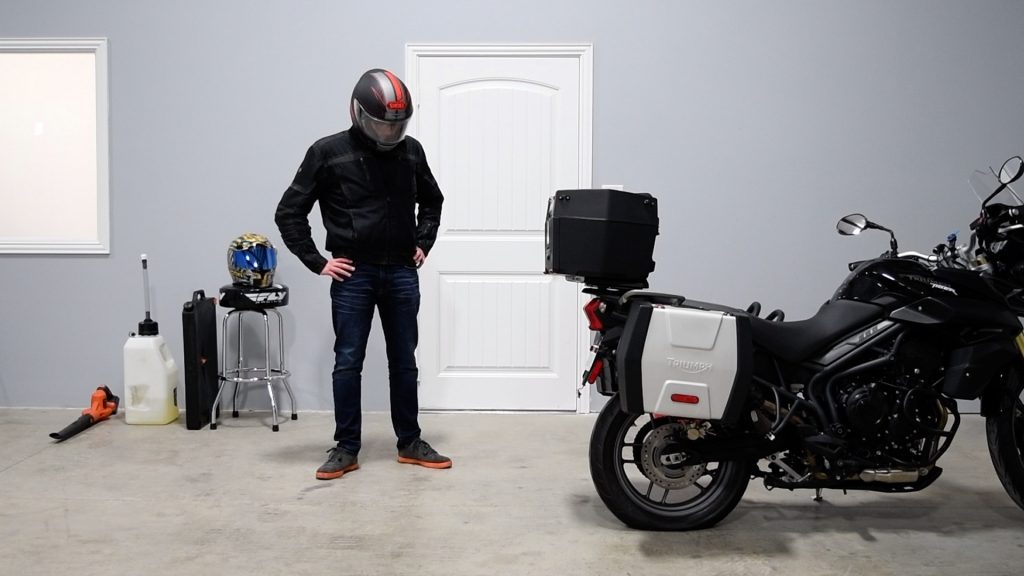
We typically don’t recommend tire patches, simply because repaired tires lose their speed rating, and because your life depends on the condition of the tires on your motorcycle.
But for reference, here are some other reasons you will need to get your motorcycle some new shoes.
- Puncture, cut, slice, or sharp debris.
- Tire more than 4 years old.
- Weather-checked (cracked around the circumference), caused from sun exposure, or dry heat.
- Consistently riding on a tire with exceedingly low pressure.
- Tire that is missing tread or with significant wear (less than 2/32 of an inch of tread in any area or displaying tread wear indicators).
- Tire with uneven wear (with some sections being more flat or more pointed due to poorly maintained motorcycle tire PSI.)
- Feathered or cupped tire. (Could be making noise or exhibiting a choppy ride). Some front tire cupping is normal, but watch for severe feathering.
If you’re still reading, chances are you probably need at least one new tire.
You should be out enjoying the open road… feel free to stop by the shop, we have plenty of tires in stock or book our mobile mechanics online. They’ll come to you to mount and balance your new tires.
